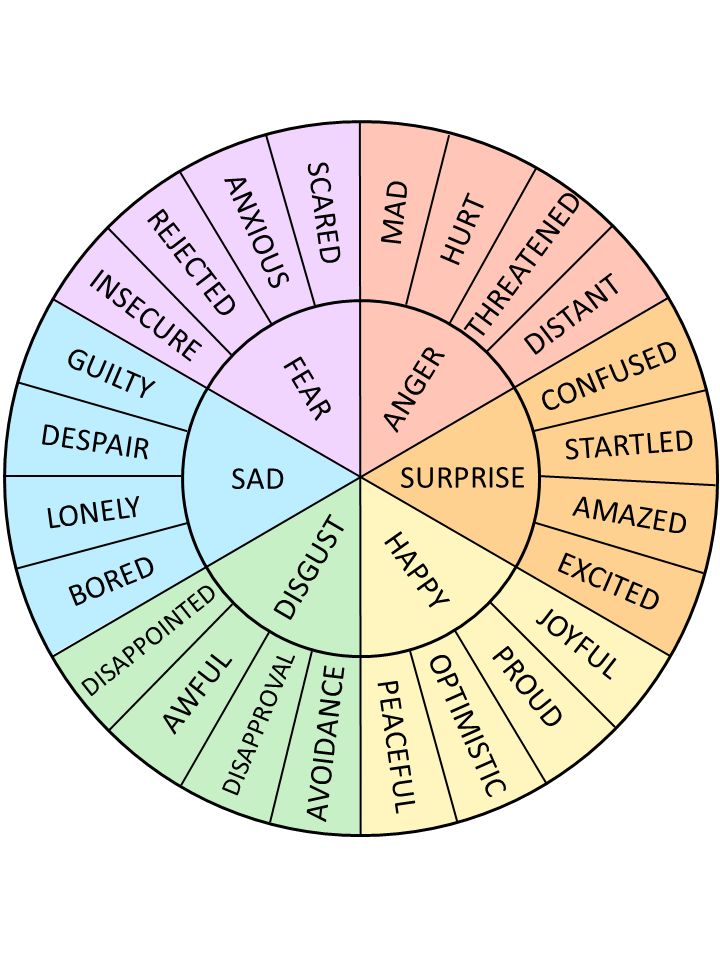
How to Build Resources in Children for Anger Management
Contents
Introduction
How can we help children effectively manage their anger? Managing anger is crucial for children’s emotional development and well-being. Anger is a natural emotion, but if not properly addressed, it can lead to negative behaviors and strained relationships. By equipping children with effective anger management resources, such as strategies for recognizing and coping with their emotions, we can guide them towards healthier ways of expressing themselves. Discover practical tools and approaches to support your child’s emotional growth and promote positive anger management.
In this article, we’ll explore practical strategies to build anger management resources in children, including understanding triggers, teaching emotion recognition, developing healthy coping mechanisms, encouraging problem-solving, and creating a supportive environment.
Why Do Children Become Angry?
Children can become angry for a variety of reasons. Understanding these factors can provide insight into their emotional responses and help in managing their anger more effectively. Here are some common reasons why children might experience anger:
- Frustration: When children encounter obstacles that prevent them from achieving their goals or completing tasks, their inability to overcome these challenges can lead to feelings of frustration. This frustration can quickly escalate into anger if the child feels powerless or helpless in the situation.
- Lack of Control: Children often have limited autonomy, which can lead to feelings of anger when they are unable to influence their environment or outcomes. Situations where they are denied choices or their preferences are ignored can make them feel powerless, contributing to their anger.
- Communication Challenges: Young children are still developing their language and communication skills. When they struggle to articulate their needs, feelings, or desires, they may become frustrated and express their distress through anger. This frustration stems from their inability to effectively communicate their inner experiences.
- Unmet Needs: Basic physical and emotional needs, such as hunger, fatigue, or discomfort, can significantly impact a child’s mood. When these needs are not met, children may become more irritable and prone to anger as their bodies and minds are not functioning optimally.
- Modeling Behavior: Children learn by observing and imitating the behavior of adults and peers. If they frequently see anger expressed in their environment, whether through parental conflicts, aggressive interactions, or other emotional displays.
Help Your Child Spot the Signs of Anger
Being able to recognize the signs of anger early can help your child make more positive decisions about how to handle it.
- Discuss Their Feelings: Encourage your child to talk about what they feel when they start to get angry. For example, they might notice physical changes such as:
- Increased Heart Rate: They may feel their heart beating faster.
- Clenched Fists: Their hands might tighten into fists.
- Tense Muscles: They may feel their muscles tightening, especially in their shoulders or jaw.
- Heat or Sweating: They could experience a feeling of warmth or begin to sweat.
- Changes in Breathing: Their breathing might become quicker or more shallow.
- Encourage Self-Awareness: Help your child become more aware of these signs by discussing them openly. Understanding these physical cues can help them recognize when they’re starting to get angry and take steps to manage it before it escalates.
- Provide Strategies: Once your child can identify these signs, teach them strategies to manage their anger effectively, such as taking deep breaths, stepping away from the situation, or using calming techniques.
Teaching Children to Recognize Their Emotions
Helping children recognize and understand their emotions is a fundamental step in developing emotional intelligence and managing feelings like anger effectively. Here are some strategies to teach children to recognize their emotions:

Use Emotion Charts
Create or use pre-made emotion charts with pictures depicting various emotions like happy, sad, angry, and scared. Encourage your child to point out which emotions they are feeling at different times. This visual aid helps children identify and label their feelings more clearly.
Image Source: pinterest.com

Emotion Words
Teach your child specific words to describe their emotions. Use simple language and examples to explain what different emotions feel like. For instance, explain that feeling “frustrated” might be similar to feeling “angry” but less intense.
Image Source: pexels.com

Open Conversations
Regularly engage in conversations about feelings with your child. Ask questions like, “How do you feel about what happened today?” or “What made you feel happy/sad/angry?” This practice encourages children to articulate their emotions and reflect on their experiences.
Image Source: pexels.com

Model Emotional Expression
Demonstrate healthy emotional expression through your own behavior. Show your child how you manage your emotions by talking about how you feel and what you do to handle those feelings. For example, you might say, “I’m feeling frustrated because I can’t find my keys, so I’m going to take a deep breath and then try to find them.
Image Source: pexels.com

Role-Playing
Use role-playing activities to help children practice recognizing and expressing emotions. Act out different scenarios with them and discuss how each character might be feeling. This exercise helps children understand various emotional responses and how to handle them.
Image Source: pexels.com

Emotion Diaries
Encourage your child to keep an emotion diary where they can draw or write about their feelings daily. This practice helps them track and reflect on their emotions over time and identify patterns or triggers.
Image Source: pexels.com

Positive Reinforcement
Praise your child when they successfully identify and express their emotions. Positive reinforcement helps build confidence and encourages them to continue practicing emotional recognition.
Image Source: pexels.com
Developing Healthy Coping Strategies
Here’s a critical comparison of how humanistic, psychodynamic, and clinical psychology approaches address the reasons for anger in children and how they recommend developing coping mechanisms:
Humanistic Psychology

Reasons for Anger:
- Core Beliefs: Humanistic psychology, particularly through Carl Rogers and Abraham Maslow, focuses on self-actualization and the need for unconditional positive regard. Anger in children might arise from unmet needs for acceptance, validation, and self-esteem.
- Self-Concept: A child’s self-concept and the discrepancy between their ideal self and real self can lead to frustration and anger. Inadequate self-worth or lack of personal growth opportunities can contribute to anger issues.
Coping Mechanisms:
- Empathy Building: Foster empathetic relationships where children learn to understand and relate to their emotions and those of others.
- Unconditional Positive Regard: Provide a supportive environment where children feel valued regardless of their behavior. This helps in reducing feelings of worthlessness and frustration.
- Self-Expression: Encourage open communication and self-expression. Activities like art, journaling, or verbal expression can help children articulate their feelings and frustrations.
Image Source: pexels.com
Psychodynamic Psychology

Reasons for Anger:
- Unresolved Conflicts: According to psychodynamic theory, anger in children might stem from unresolved conflicts or unmet needs from earlier stages of development (e.g., Freud’s psychosexual stages).
- Defense Mechanisms: Anger can also be a manifestation of internal conflicts and defense mechanisms, such as displacement, where the child projects anger onto more acceptable targets.
Coping Mechanisms:
- Expression of Repressed Emotions: Use techniques like free association and guided imagery to help children express and process repressed emotions.
- Exploration of Past Experiences: Explore past experiences through play therapy or discussion to understand their impact on current anger issues.
- Insight Development: Assist children in gaining insight into unconscious motivations and conflicts to help resolve internal issues and reduce anger.
Image Source: pexels.com
Clinical Psychology

Reasons for Anger:
- Behavioral and Cognitive Factors: Clinical psychology often focuses on identifiable behavioral patterns and cognitive distortions that lead to anger. For instance, maladaptive thought patterns, such as catastrophizing or overgeneralization, can exacerbate anger.
- Environmental Influences: Factors such as inconsistent discipline, exposure to aggressive behavior, or stressful family environments can contribute to anger issues in children.
Coping Mechanisms:
- Skill-Building: Develop specific skills for managing anger, such as relaxation techniques, mindfulness, and social skills training. These skills help children handle anger more effectively and constructively.
- Cognitive-Behavioral Therapy (CBT): Utilize CBT techniques to help children recognize and alter maladaptive thought patterns and behaviors associated with anger. This includes teaching problem-solving skills and coping strategies.
- Behavioral Interventions: Implement behavioral strategies such as reinforcement of positive behaviors and consequences for inappropriate expressions of anger.
Image Source: pexels.com
Each approach offers valuable insights and strategies for understanding and managing anger in children, with humanistic psychology highlighting the importance of self-worth and empathy, psychodynamic psychology focusing on deep-rooted emotional conflicts, and clinical psychology providing practical, evidence-based techniques for behavior modification.
Want to know how creative art therapy can help with anger management? Explore how activities like drawing and painting offer children a non-verbal way to express and process their emotions. For more insights and practical tips, consider reading this blog.
Building a Supportive Environment
Creating a supportive environment is crucial for helping children manage their emotions effectively and foster their overall well-being. Here are five key strategies to build such an environment:
- Consistent Routine: Maintain a regular daily schedule to provide stability and reduce stress. For example, having set meal times, bedtimes, and homework routines helps children feel secure and less likely to become overwhelmed or frustrated.
- Clear Communication: Communicate expectations and rules clearly and calmly. For instance, explain household rules in simple terms and discuss the reasons behind them. This helps children understand what is expected and reduces confusion that can lead to anger.
- Positive Reinforcement: Recognize and praise positive behavior. For example, if a child uses a healthy coping strategy, such as taking deep breaths when upset, acknowledge their effort and provide encouragement. This reinforces the use of constructive methods for managing emotions.
- Empathy and Understanding: Show empathy by validating your child’s feelings and offering support. For instance, if a child is upset about a friendship issue, listen attentively and express understanding, saying something like, “I can see that you’re really hurt by what happened. Let’s talk about how we can work through this.”
- Encourage Open Expression: Foster an environment where children feel safe to express their emotions. For example, create regular opportunities for discussions about feelings, such as family meetings or one-on-one talks. Encourage your child to share their thoughts and feelings without fear of judgment.
Conclusion
Building resources in children for anger management is a proactive step in supporting their emotional and social development. By understanding triggers, teaching emotion recognition, developing healthy coping strategies, encouraging problem-solving, and creating a supportive environment, parents and caregivers can equip children with the tools they need to manage anger constructively. These skills not only help children navigate their current challenges but also lay the groundwork for a lifetime of emotional resilience and well-being.
References
- American Psychological Association. (2017). Managing anger: A guide for kids.
- Berk, L. E. (2018). Child development (10th ed.). Pearson.
- Cohen, J. A., & Mannarino, A. P. (2016). Trauma-focused cognitive behavioral therapy for children and adolescents: An empirical review. Journal of the American Academy of Child & Adolescent Psychiatry, 55(8), 639-648.
- Gross, J. J. (2015). Emotion regulation: Current status and future directions. Psychological Inquiry, 26(1), 1-26.
- Harris, P. L. (2019). Children’s understanding of emotion. Current Directions in Psychological Science, 28(2), 128-133.
- Lemerise, E. A., & Arsenio, W. F. (2000). An integrated model of emotion processes and cognition in social development. Child Development, 71(1), 1-24.
- Morris, A. S., & Tolan, P. H. (2017). Interventions to prevent and treat anger problems in children and adolescents. Clinical Child and Family Psychology Review, 20(2), 104-116.
- Rothbart, M. K., & Bates, J. E. (2006). Temperament. In N. Eisenberg, W. Damon, & R. M. Lerner (Eds.), Handbook of child psychology: Vol. 3. Social, emotional, and personality development (6th ed., pp. 99-166). Wiley.
- Saarni, C. (2011). The role of emotional competence in development and adjustment. In J. J. Gross (Ed.), Handbook of emotion regulation (2nd ed., pp. 58-72). Guilford Press.
- Webster-Stratton, C., & Reid, M. J. (2019). The incredible years parents, teachers, and children training series: A review and meta-analysis of the outcome studies. Clinical Child and Family Psychology Review, 22(3), 232-251.






